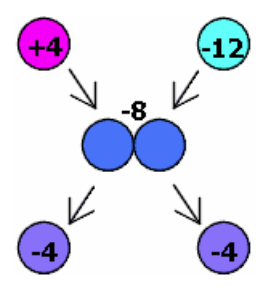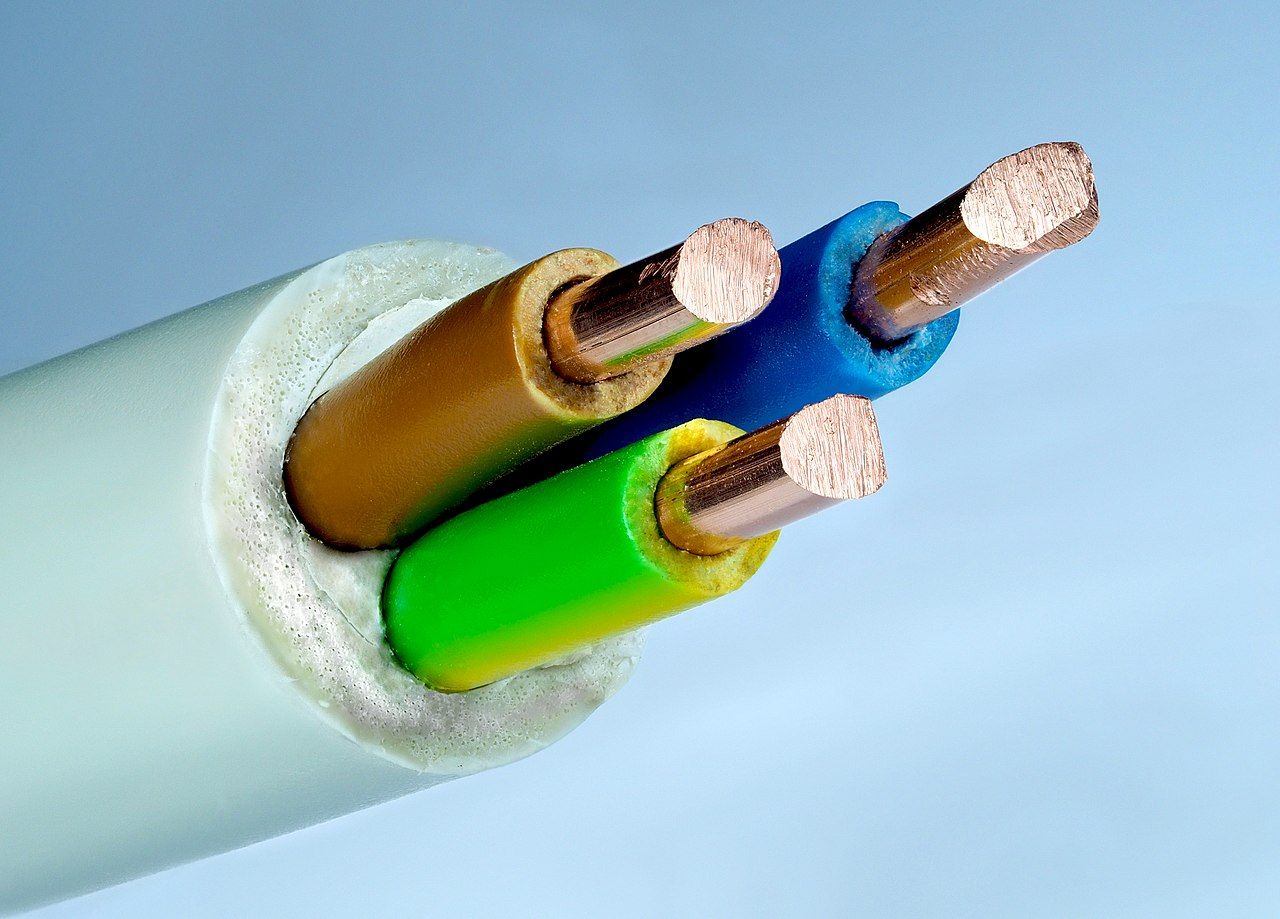3.3 Conservation of Electric Charge
5 min read•january 13, 2023
K
Krish Gupta
Daniella Garcia-Loos
AP Physics 2 🧲
61 resourcesSee Units
Conservation of Electric Charge
When charged particles interact, the net amount of charge must remain constant.
In this example, a sphere with a 4e charge is touched to an identical sphere with a 12e charge, and then the two spheres are separated. Afterward, each sphere has a 4e charge. The 12e sphere transferred charge to the 4e sphere until they both reached 4e. The net charge of 8e was constant throughout this process.

Image created by the Peter Apps
The conservation of electric charge is a fundamental principle in physics that states that the total electric charge of a closed system remains constant over time. Here are some key points about the conservation of electric charge:
- Electric charge: Electric charge is a property of certain particles that is associated with the presence of electric charge. Examples of particles that can be charged electrically include electrons, protons, and ions.
- Conservation of electric charge: The conservation of electric charge states that the total electric charge of a closed system remains constant over time. This means that the net electric charge of a closed system cannot be created or destroyed, but it can be transferred from one object to another.
- Closed system: A closed system is a group of objects that are being studied or analyzed as a whole, and whose properties and behavior are not significantly influenced by their surroundings. A closed system is often defined by its boundaries, which can be physical or conceptual.
- Examples of the conservation of electric charge: The conservation of electric charge can be observed in many everyday phenomena, such as the transfer of electric charge between objects when they are touched, the flow of electric charge through circuits, and the charge transfer that occurs during chemical reactions.
CollegeBoard Essential Knowledge
The exchange of electric charges among a set of objects in a system conserves electric charge.
- Charging by conduction between objects in a system conserves the electric charge of the entire system
- Charge separation in a neutral system can be induced by an external charged object placed close to the neutral system
- Grounding involves the transfer of excess charge to another larger system (e.g.Earth)
Conductors and Insulators
The movement of charge in a substance depends on the properties of the substance that the charge is trying to move through. In general, there are 2 types of substances:
- Conductors: allow the charge to move easily through it.
- Insulators: restrict the movement of the charge.

Image from Wikimedia
Often, we use insulators to prevent the charge from traveling, like in a typical household wire. The rubber insulator wraps the conductive copper wires to prevent short circuits or electrocution.
Conductors and insulators are materials that have different electrical properties. Here are some key points about the difference between conductors and insulators:
- Conductors: Conductors are materials that allow electric charge to flow through them easily. Examples of conductors include metals such as copper, silver, and gold, as well as some non-metallic materials like graphite and salt water.
- Insulators: Insulators are materials that do not allow electric charge to flow through them easily. Examples of insulators include materials such as rubber, plastic, and glass.
- Electrical resistance: The resistance of a material to the flow of electric charge is a measure of how easily electric charge can flow through it. Conductors have low resistance, while insulators have high resistance.
- Uses of conductors and insulators: Conductors are often used in electrical wiring and circuits to carry electric current, while insulators are used to protect against electric shocks and to isolate electrical components from each other.
- Electron mobility: The mobility of electrons in a material is a measure of how easily the electrons can move within the material. Conductors have high electron mobility, while insulators have low electron mobility.
Example Question 1:
A copper wire has a length of 1 meter and a cross-sectional area of 0.1 square millimeters. The wire has a resistance of 1 ohm. What is the resistivity of the wire?
Solution:
The resistivity of a material is a measure of its resistance to the flow of electric charge. It is defined as the resistance of a unit length of material per unit cross-sectional area.
The resistivity of a wire can be calculated using the equation: ρ = R*L/A, where ρ is the resistivity of the wire, R is the resistance of the wire, L is the length of the wire, and A is the cross-sectional area of the wire.
In this problem, the resistance of the wire is 1 ohm, the length of the wire is 1 meter, and the cross-sectional area of the wire is 0.1 square millimeters.
Therefore, the resistivity of the wire is: ρ = 1 ohm1 m/0.1 mm^2 = 10 ohmm
This means that the resistivity of the wire is 10 ohm*m.
Example Question 2:
A copper wire has a length of 2 meters and a cross-sectional area of 0.2 square millimeters. The wire has a resistivity of 10 ohm*m. What is the resistance of the wire?
Solution:
The resistance of a wire can be calculated using the equation: R = ρ*L/A, where R is the resistance of the wire, ρ is the resistivity of the wire, L is the length of the wire, and A is the cross-sectional area of the wire.
In this problem, the resistivity of the wire is 10 ohm*m, the length of the wire is 2 meters, and the cross-sectional area of the wire is 0.2 square millimeters.
Therefore, the resistance of the wire is: R = 10 ohmm2 m/0.2 mm^2 = 100 ohm
This means that the resistance of the wire is 100 ohm.
Example Question 3:
A device is designed to transfer electric charge from one object to another. What is the device called, and what are its main characteristics?
Solution:
The device is called an electric conductor. Conductors are materials that allow electric charge to flow through them easily. Examples of conductors include metals such as copper, silver, and gold, as well as some non-metallic materials like graphite and salt water.
The main characteristics of conductors are:
- Low resistance: Conductors have low resistance to the flow of electric charge, which means that electric charge can flow through them easily.
- High electron mobility: Conductors have high electron mobility, which means that the electrons within the material can move freely.
- Small or zero band gap: Conductors have a small or zero band gap, which means that it is easy to move an electron from the valence band (the outermost energy band of an atom) to the conduction band (the energy band where electrons can move freely).
- Good conductivity: Conductors have good conductivity, which means that they are good at conducting electricity.
Browse Study Guides By Unit
💧Unit 1 – Fluids
🔥Unit 2 – Thermodynamics
⚡️Unit 3 – Electric Force, Field, & Potential
💡Unit 4 – Electric Circuits
🧲Unit 5 – Magnetism & Electromagnetic Induction
🔍Unit 6 – Geometric & Physical Optics
⚛️Unit 7 – Quantum, Atomic, & Nuclear Physics
✏️Frequently Asked Questions
📆Big Reviews: Finals & Exam Prep

Fiveable
Resources
© 2023 Fiveable Inc. All rights reserved.